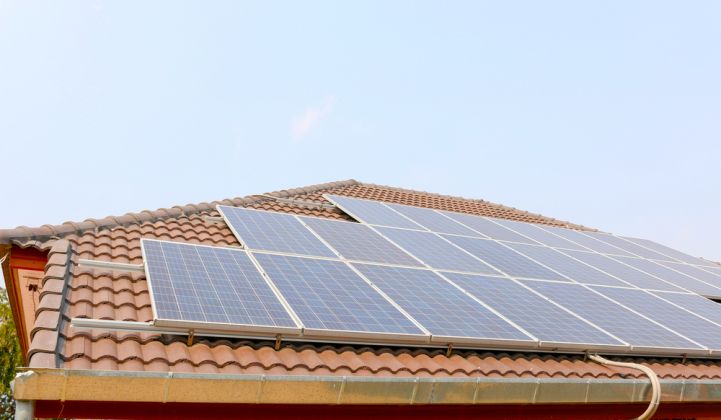It could be a slow year for some U.S. solar companies due to recent policy shifts, but it’s a great time to be a solar consumer.
Solar panel prices continue to drop, consumers have an increasing number of choices around financing and equipment, and there is greater transparency than ever before in the U.S. solar industry, according to a new report out from solar data and quote comparison company EnergySage.
“Traditionally, the industry has been pretty opaque, and it’s been hard for the consumer to know what they should pay,” said Vikram Aggarwal, founder and CEO of EnergySage. However, that’s been changing as the industry matures, and we’re now entering “very exciting times for a consumer of solar,” he said.
The new report found that the price of solar dropped considerably between the first half of 2016 and the second half of 2016. The quoted price-per-watt of solar systems in the U.S. declined by 6.25 percent between the first and second half of the year, according to EnergySage. The company pulls its information from a database of quotes from solar installers across the country.
Some states saw bigger declines than others, depending on the incentives available and the current status of a state’s solar industry. For example, Virginia saw per-watt prices fall from $3.51 to $3.02. Other states like Arizona and California saw smaller price drops, but have been offering those low prices for awhile. For example, the majority of the solar quotes offered in Arizona fell below $3.00 per watt, the report states.

Source: EnergySage
The dropping prices could be due to a number of factors, such as increased solar installer competition, the continued decline in the cost of solar equipment, and lower labor costs as installation techniques and balance-of-system technologies improve.
At the same time, solar installers are starting to pull back spending on customer acquisition as they face potentially flat or declining sales this year. Tesla recently said that SolarCity would no longer use door-to-door solar sales tactics, and would focus on online sales instead.
Aggarwal said that’s probably a good call. Over the past few years, some installers spent massive amounts of money on cold-calling customers and knocking on doors. “I’m not sure this has been helping the industry and is a good thing for the long term. There’s a better way to market solar by providing the right information at the right time and focusing online,” he said. EnergySage’s report found that most consumers want a solar shopping experience that begins on the web.
There are also more choices for financing. In recent years, more EnergySage shoppers have opted to own their systems, instead of having a third party own the system. The number of solar customers wanting a lease or power-purchase agreement (in contrast to owning the panels) fell from 8.4 percent in 2015 to 4.8 percent in 2016.
As a result, there's growth in the number of loan companies offering options to consumers. Two years ago, only two loan providers (Sungage Financial and Admirals Bank) made up 53.7 percent of the loan financing offered in solar quotes.
But in the second half of 2016, those two loan providers fell to a combined 17.8 percent of the market. Other competitive solar loan providers now include Dividend Solar, Solar Mosaic and Spruce Financial.

Source: EnergySage
With more options and offerings, it means solar consumers should do their homework before making a purchase -- and for good reason. A new NREL study, which used quote data from EnergySage, found that estimates from large installers are 10 percent higher than quotes from smaller installers.
The solar industry in the U.S. still has a lot of room to mature and grow. The typical customer is a middle-aged, middle- or upper-class, a homeowner and usually male. There are plenty of other customer classes, however. (GTM Research and PowerScout recently analyzed the income levels of solar customers and found that 70 percent are middle-income.)
Aggarwal thinks the solar industry can do better when it comes to growth and sales: “I think if the industry does it right, it can grow dramatically faster than it has been doing so far.”
Join GTM for the 10th Annual Solar Summit & 2nd Annual S3 Solar Software Summit in Arizona May 16-18. We’ve got the biggest names in the solar industry confirmed to attend and speak. And we've got a packed agenda of topics including solar software, energy storage, finance, community solar, corporate procurement, balance of systems, and much more. Check out the event site here.



